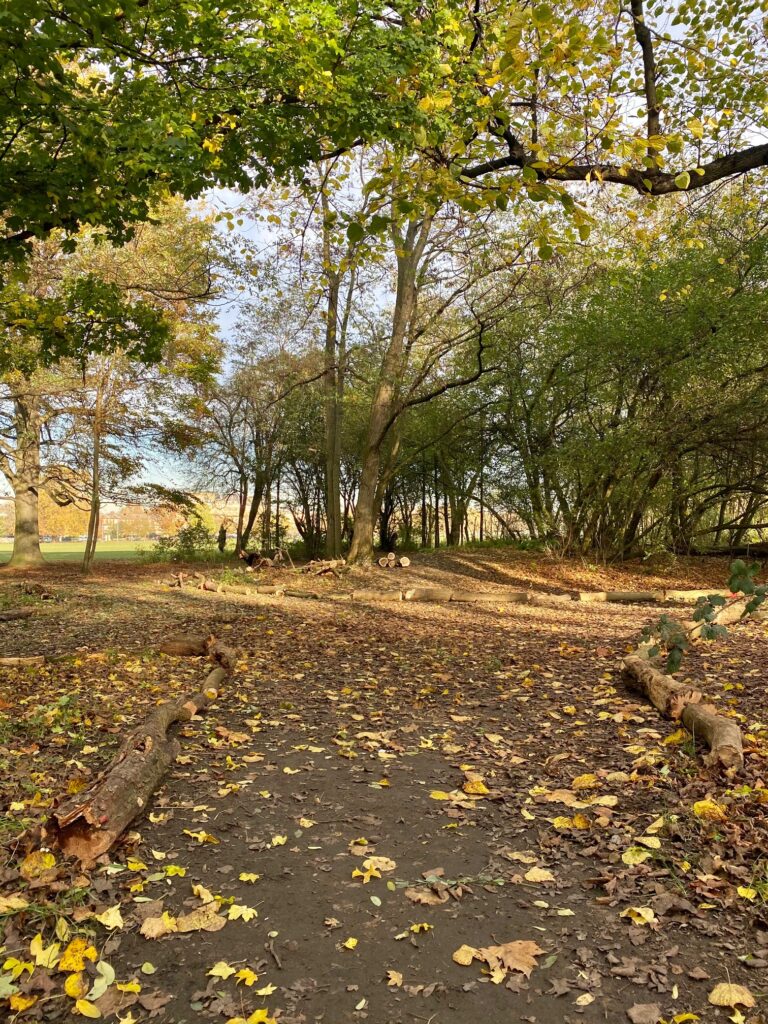A series of sensitive interventions have been undertaken in Battersea Rise Woods on Clapham Common since mid-October marking the start of significant improvements to the woodlands on Clapham Common.
Additional activities will commence in spring 2021 and will also include Nursery Woods, the woodland area nearer to Clapham Common Southside.
The key aims of this project, managed in partnership with CCMAC and Lambeth Council, are to:
- Gradually improve the condition, quality and resilience of existing lowland deciduous woodland, a UK Biodiversity Action Plan Priority Habitat, through appropriate interventions in the two areas of woodland on Clapham Common, including selective invasive species control;
- Carefully create new areas of open or edge wetland habitat within and around the woodlands to benefit species and habitat diversity, especially invertebrates and amphibians;
- Increase the Common’s capacity to capture, store and disperse rain and surface-derived water to improve its function as a flood water storage facility and contribute to local sustainable urban drainage;
- Improve access through the woodlands to benefit community use for activities such as walking, natural play and educational activities, through an improved path network.
Some of the works that have recently been completed in Battersea Rise Woods include:
Woodland Management
- Selective removal or reduction of invasive tree species like robinia (false acacia) and sycamore, where these were encroaching on existing open grassland or scrub habitat, or where they were starting to impede or restrict safe access through the woodland.
- No mature trees have been removed, only small self-set saplings or ‘suckers’ from existing larger trees; any remaining rootstocks or root balls will be carefully removed during the winter and early spring before they have a chance to regrow.
- The total amount of living wood to be removed is less than 1% of the total volume of standing wood in Battersea Rise Woods, and this will be done over a period of two years.
- All dead wood is left on site and used to create and improve ground floor habitat.
- All felled wood has been recycled and used on existing paths as mulch or left stacked as woodpiles for biodiversity benefits, especially for fungi and wood-dwelling invertebrates including stag beetles.
Ground Reprofiling
- Sensitive alterations to the ground in the southern section of Battersea Rise Woods to create a pair of ‘depressions’ or ‘scrapes’ that will allow surface water to collect over the winter and spring: this includes a small ‘bowl’ of exposed or disturbed ground, ideal for damp-loving plants, and a small shallow pond that will hold water and benefit key species like amphibians (e.g. frogs and newts) and invertebrates like dragonflies and beetles.
- A rainwater capture and storage feature just outside the woods, slightly deeper in profile, which has been profiled to take water from adjacent paths and prevent them becoming blocked or slippery in icy weather; it’s banks will gradually grade out as they settle, and they will be planted up with reeds and grasses.
- These landscaped areas will be planted up, during the spring, with damp- or water-loving native plants, including reeds, rushes and ferns, as well as seeded with a mixture of native shade and water-tolerant native grasses along with native wildflowers that have high pollinator and tolerance to drought and waterlogging.
- These areas are designed to gradually lose water and dry out over the summer and autumn , but still giving wild plants and animals the greatest chance to establish, seed and reproduce whilst these are still wet, and then depart or shut down before they dry out – such features are often of high biodiversity value, as they are favoured by certain species of wild plant and animal that are increasingly rare or limited in distribution.
Planting and Habitat Improvements
- Working with CCMAC, Lambeth Council will develop a planting plan during winter 2020 and the new landscaped areas, including the woods, will be planted up with a mixture of native herbs, grasses and shrubs which will have high tolerance of waterlogging or drought, but be of maximum benefit to pollinators and seed and fruit eating species like butterflies, moths and birds.
Next Steps
- A new five-year Clapham Common Woodland Management Plan will be developed by CCMAC and Lambeth Council to help plan the future management and continued improvement of both Battersea Rise and Nursery Woods.
- This will help identify ‘next steps’ not just for Battersea Rise Woods, but also how to then manage and improve Nursery Woods, which will be a priority for Phase Two to protect important habitats and prevent encroachment by invasive species or loss of ground flora.
- To support the management plan a new ‘Lambeth Woodland Management Strategy’ will be produced to help guide and inform how woodland areas in Lambeth are to be protected and improved, including the control of invasive plant and tree species, and how to respond to existing and emerging plant and trees diseases, both of which are now placing a great threat to the unique heritage, diversity and accessibility of the woodlands on not just the Common but other sites across Lambeth.


